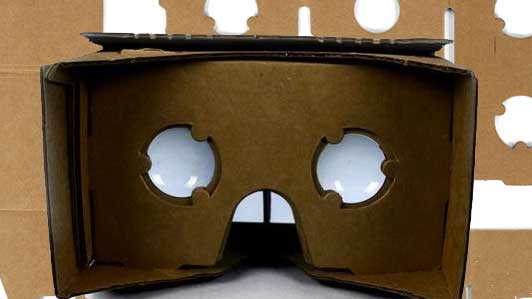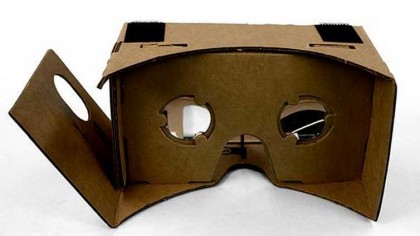
For a long time, the human race has dreamt about virtual reality. When you picture a VR headset, you probably think of something really high-tech and far too expensive to be practical.
Apparently, the guys at Google thought the same thing. While Facebook has bought into virtual reality technology for a whopping $2 billion, Google has settled for something a little more simple. Who would have imagined that we could create a VR headset out of something we already had: a simple piece of cardboard? Google did, that's who.
Say hello to Google Cardboard. It may not sound like much - in fact, it may sound a lot like a joke - but this simple cardboard cutout can turn your Android phone into a neat virtual reality headset. Whether you're looking for a cheap way to enhance your tech experience or you just want to see what this product is capable of, it's worth checking out.
What is Google Cardboard?
Google Cardboard was part of a 20 percent project, a company policy that allows employees to work on side projects in addition to their everyday duties. This one just happened to be enough of a success that tons of companies are copying the design and creating these super cheap and simple VR headsets for compatibility with other smartphones.

Yeah, yeah. But what is Google Cardboard? It's simply a design - one you can either buy as a kit from a manufacturer or use to build your own - that utilizes cardboard and a pair of 40mm focal distance lenses to turn your phone into a virtual reality headset. It also uses magnets, velcro, and a rubber band to keep everything in place.
Once put together, users set their phone into it and look through the lenses. In combination with compatible apps, this simple setup can turn interacting with your handset's screen into a seemingly real-world experience.
How does it work?
Google Cardboard works by placing your phone at the optimal distance away from the lenses. Then, by using compatible apps, the lenses create a 3D effect when held up to your eyes. You can even move your head around, and the images will respond as if you're in the same place as what's displayed on your screen. For example, you can use the Street Vue demo and explore the streets of Paris while viewing your surroundings in a virtual reality that reacts to your actual position in space.
Get daily insight, inspiration and deals in your inbox
Sign up for breaking news, reviews, opinion, top tech deals, and more.
As an added bonus, it comes with an NFC chip that will automatically launch your official Cardboard app when you place your phone into the headset.
What's also somewhat amazing is the magnet on the side. If all you're doing is folding up a piece of cardboard and sticking your phone inside it, then what's the magnet for? Does it help hold the thing together? Not quite.
The little magnet on the side is actually a quite ingenious design aspect of Google Cardboard. It's a button! Since you can't touch your phone's screen while it's inside the Cardboard, Google has provided this magnet that, when moved, acts as if you've pressed your screen. It uses your phone's magnetometer, which is usually used for compass functions, to sense this and control it while it's in the cardboard.
- 1
- 2
Current page: Introduction and how it works
Next Page Available content and how to get Cardboard